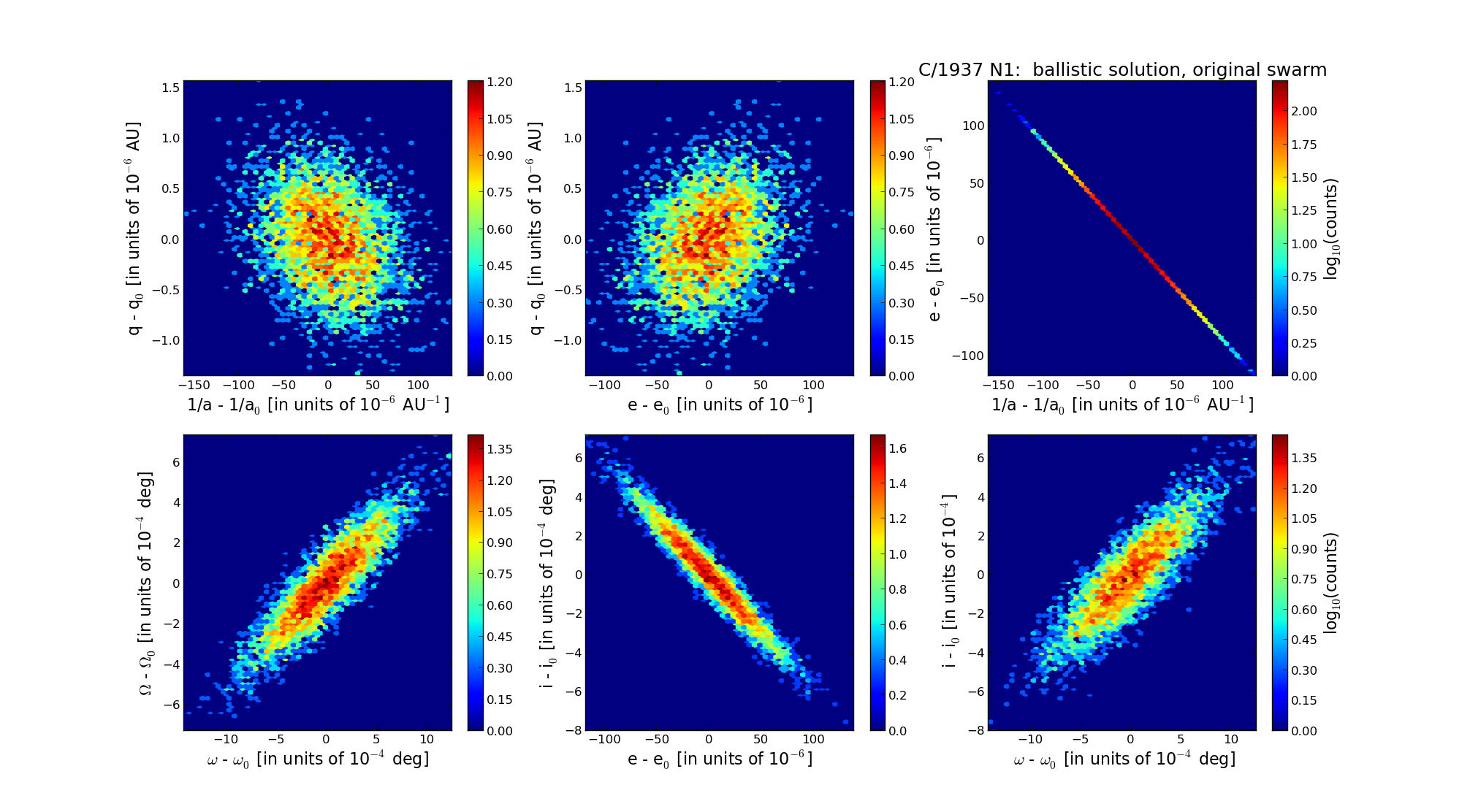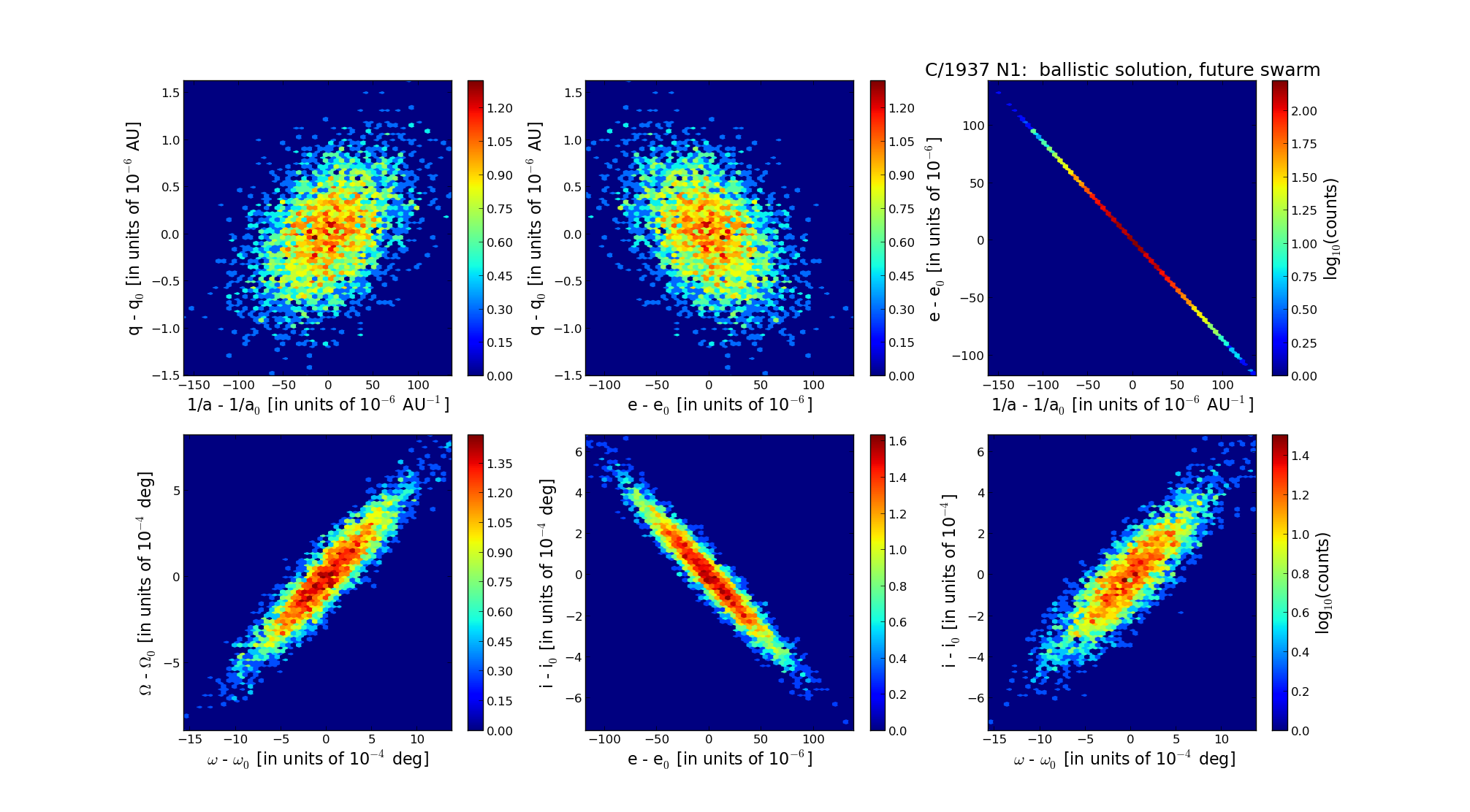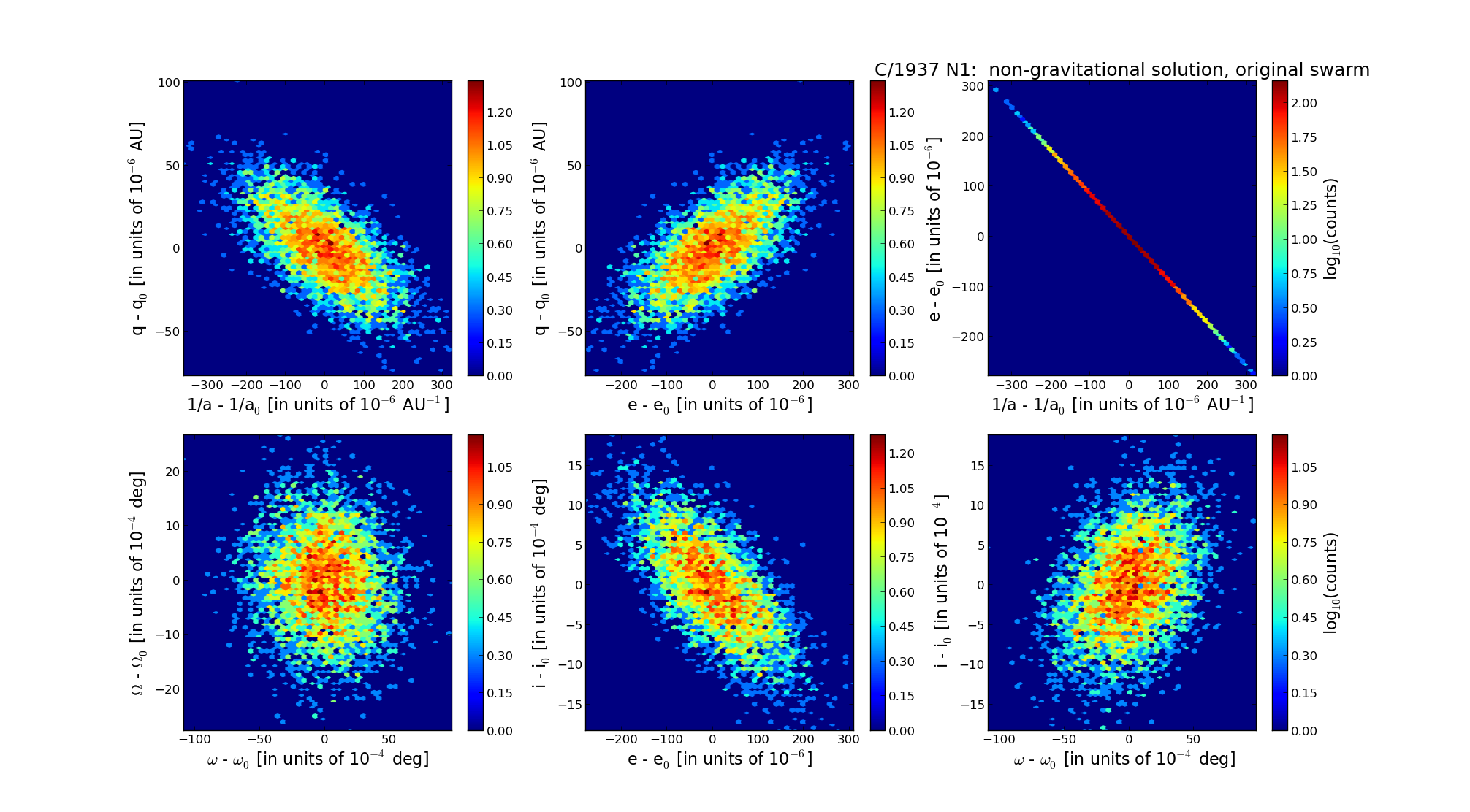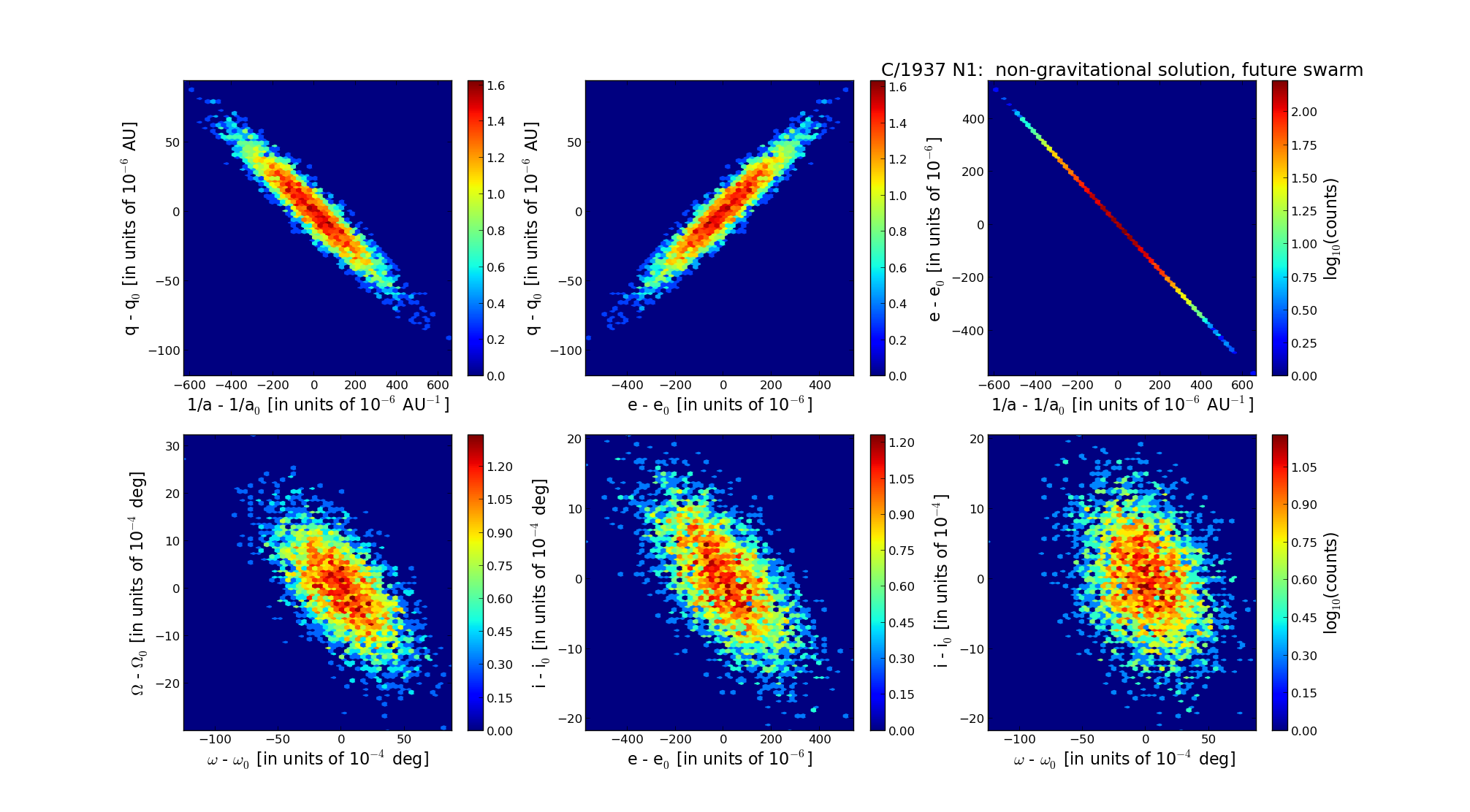| Solar System Dynamics & Planetology Group |
 |
C/1937 N1 Finsler |  |
| Solar System Dynamics & Planetology Group |
 |
C/1937 N1 Finsler |  |
| number of observations | 413 |
| number of residuals | 765 |
| data interval | 1937 July 4 — 1937 Dec. 30 |
| rms [arcsec] | 2.05 |
| orbit quality class | 2a |
| Epoch (TT) | 19370815.0 | = JD 2428760.5 |
| time of perihelion passage (TT) | 19370815.665333 | ± 0.000189 |
| perihelion distance | 0.86274422 | ± 0.00000040 |
| eccentricity | 1.00005979 | ± 0.00003586 |
| argument of perihelion [deg] | 114.835849 | ± 0.000396 |
| longitude of the ascending node [deg] | 59.420445 | ± 0.000220 |
| inclination [deg] | 146.415278 | ± 0.000197 |
| inverse semimajor axis [10-6 au-1] | -69.30 | ± 41.56 |

| Epoch (TT) | 16390419 | |
| time of perihelion passage (TT) | 19370815.655572 | ± 0.001324 |
| perihelion distance | 0.85943419 | ± 0.00000041 |
| eccentricity | 0.99996793 | ± 0.00003482 |
| argument of perihelion [deg] | 114.977962 | ± 0.000370 |
| longitude of the ascending node [deg] | 59.471335 | ± 0.000201 |
| inclination [deg] | 146.361452 | ± 0.000205 |
| inverse semimajor axis [10-6 au-1] | 37.31 | ± 40.51 |

| Epoch (TT) | 22370911 | |
| time of perihelion passage (TT) | 19370815.710412 | ± 0.000147 |
| perihelion distance | 0.85988734 | ± 0.00000043 |
| eccentricity | 0.99983290 | ± 0.00003483 |
| argument of perihelion [deg] | 114.636164 | ± 0.000405 |
| longitude of the ascending node [deg] | 59.325102 | ± 0.000235 |
| inclination [deg] | 146.421365 | ± 0.000195 |
| inverse semimajor axis [10-6 au-1] | 194.32 | ± 40.51 |
| number of observations | 413 |
| number of residuals | 766 |
| data interval | 1937 July 4 — 1937 Dec. 30 |
| rms [arcsec] | 1.92 |
| orbit quality class | 2b |
| Epoch (TT) | 19370815.0 | = JD 2428760.5 |
| time of perihelion passage (TT) | 19370815.666463 | ± 0.000525 |
| perihelion distance | 0.86274100 | ± 0.00000111 |
| eccentricity | 0.99976776 | ± 0.00010937 |
| argument of perihelion [deg] | 114.837745 | ± 0.001203 |
| longitude of the ascending node [deg] | 59.421272 | ± 0.000665 |
| inclination [deg] | 146.416972 | ± 0.000529 |
| inverse semimajor axis [10-6 au-1] | 269.19 | ± 126.77 |
| Nongravitational parameters [10-8 au/day2] | A1 = 1.976 ± 0.495 | A2 = 2.115 ± 0.883 | A3 = -0.102 ± 0.193 |

| Epoch (TT) | 16331027 | |
| time of perihelion passage (TT) | 19370815.661527 | ± 0.001655 |
| perihelion distance | 0.85934606 | ± 0.00002184 |
| eccentricity | 0.99956398 | ± 0.00008655 |
| argument of perihelion [deg] | 114.991035 | ± 0.002702 |
| longitude of the ascending node [deg] | 59.472210 | ± 0.000809 |
| inclination [deg] | 146.363379 | ± 0.000573 |
| inverse semimajor axis [10-6 au-1] | 507.39 | ± 100.72 |

| Epoch (TT) | 22380218 | |
| time of perihelion passage (TT) | 19370815.715783 | ± 0.001815 |
| perihelion distance | 0.85990802 | ± 0.00002536 |
| eccentricity | 0.99980114 | ± 0.00014766 |
| argument of perihelion [deg] | 114.641669 | ± 0.002542 |
| longitude of the ascending node [deg] | 59.325890 | ± 0.000772 |
| inclination [deg] | 146.423252 | ± 0.000625 |
| inverse semimajor axis [10-6 au-1] | 231.25 | ± 171.72 |